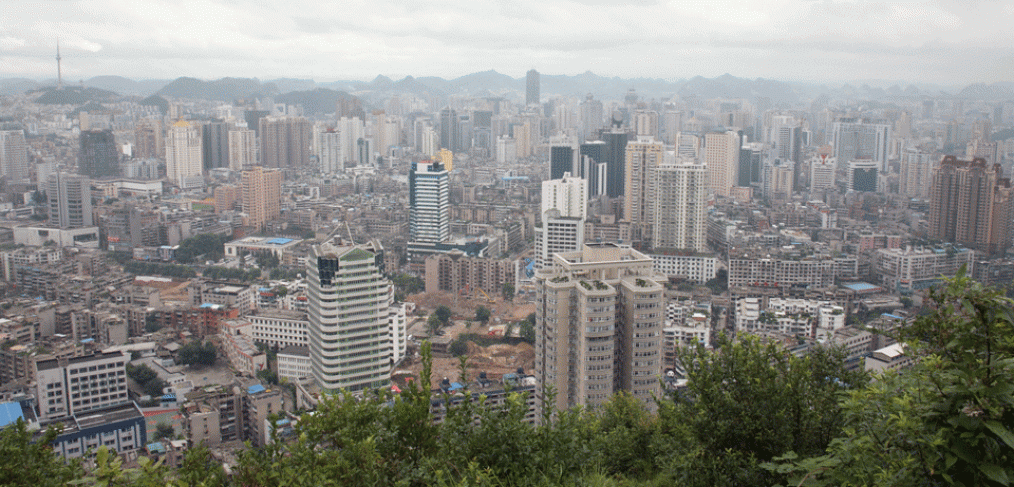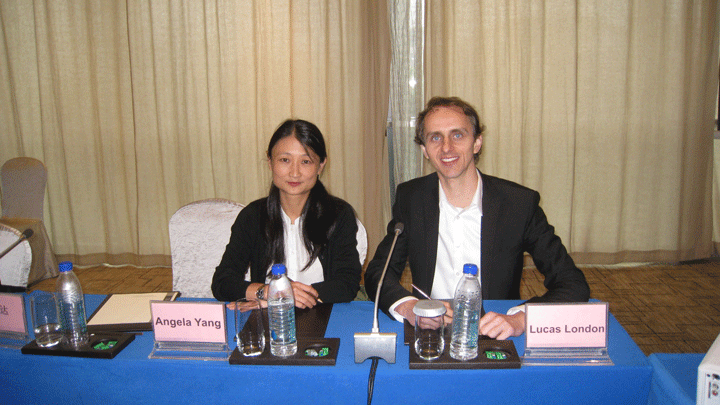
Shelter Mission to Guiyang, China
As part of the ARCADIS Shelter program, I recently traveled to Guiyang in Southwest China along with my EC Harris colleague Angela Yang to help the city government steer its development in a more sustainable manner.
Like many Chinese cities, Guiyang has witnessed tremendous urbanization in the past thirty years, and with it has come many undesirable consequences that are so widely documented throughout China today – air and water pollution, congestion and social inequality to name but a few. Fortunately, the city government has realized the need to develop a more sustainable roadmap for developing its city and growing its economy.
And it’s with this notion that planning officials from Guiyang engaged UN Habitat to formulate a way to prioritize steps forward and to measure the city’s sustainable performance – a bit like Performance-Driven Design (PDD) but at the scale of a city. The result of this process has formed the Guiyang Eco-Civilization City Indicator System (GECCIS).
During the visit, Angela and I served on an expert panel that reviewed a beta version of GECCIS. It was an honor to be among notable sustainability and urban planning experts from around Asia and Europe, many of whom have 20-30 years of experience in the field.
The review took place during an intensive one-day (a very full one day) workshop, during which we dissected over 100 indicators covering economic, social, cultural and environmental performance. For each indicator, we zoomed in to question how it was being measured and whether the measurement actually determines successful implementation. The discussion was both animated and in-depth – the conclusion will be developed into a new revision of the indicator system with nearly every indicator edited to be more precise and useful in measuring Guiyang’s sustainability.
As expected, many of the indicators were fairly universal, covering sustainability metrics typical to all cities – air quality, access to public transit and quality of educational facilities, for example. But perhaps the most interesting part of GECCIS were the indicators that covered Guiyang’s specific approach to achieving its own sustainable future. The municipality is measuring its forest coverage rate and has set itself a target of 50% coverage by 2020 (today, the city boasts an already impressive rate of 45%). This is certainly atypical for a Chinese city, where developable land is usually consumed rapidly by development and green space is mostly scarce.
But for Guiyang, there is a recognition that the local ecology and topography, particularly the karst formations, are a key part of the city’s identity and environment – they are the first thing you see when you arrive by airplane and travel through the city.
The city is responding with an extensive effort to remove undesirable development on karst topography and restore native vegetation as part of a broader ecological network of green zones encircling pockets of dense development. GECCIS also makes a point to include cultural indicators as a separate category, rather than combining these credits in the social category (similar to Abu Dhabi’s Estidama green rating system). Much of the conversation among the experts was focused on how Guiyang can retain its unique cultural roots, which are increasingly under threat of being forgotten in the race to modernity.
It was great to discuss the ways in which sustainability could be measured in such depth – particularly social and cultural factors that are often less tangible. The panel discussion in Guiyang mirrored numerous conversations we have had in our Shanghai PUD team about applying PDD to cities in China in a measurable and meaningful way. The takeaway is that for an indicator system (or PDD for a city) to be effective, it must be comprehensive and recognize the synergies between economic, social, environmental and cultural efforts. This becomes an incredibly detailed exercise that requires close cooperation between many of the city’s agencies – a recurring point raised during the expert panel workshop in advising Guiyang on how to implement change.
Angela and I are pleased to have participated in the expert panel discussion and hope to see positive steps towards a sustainable future in Guiyang. And although the real test still lies ahead in implementation, it’s encouraging to see that the highest levels of government in Guiyang have the political will to correct the course of urbanization in their city.
Cover Image via Flickr

